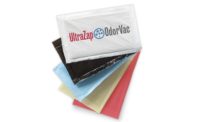Paper Pak industries introduces UltraZap®OdorVac

Paper Pak Industries (paperpakindustries.com), the leading manufacturer of active packaging technology for the food industry, has developed UltraZap®OdorVac, a revolutionary active absorbent that simultaneously captures any confinement odors and reduces bacterial growth in the purge.
Vacuum packaged fresh proteins often suffer from confinement odors, as the barrier film used to prevent oxygen transmission also prevents the trace amounts of odor causing molecules to escape. Consumers, after opening a vacuum packaged protein, typically associate confinement odors with spoilage bacteria and then discard or return the fresh protein for full credit.
Paper Pak Industries chief executive officer and president Ron Jensen notes, "UltraZapOdorVac features a proprietary mix of active ingredients and anti-microbials designed specifically for vacuum packages of fresh protein. The active ingredients capture any odor molecules being formed while the anti-microbials slow down bacterial growth, thus reducing amino acid breakdown and the formation of odor molecules.”
Confinement odors are generated from the breakdown of amino acids present in proteins, either by microbiological or by enzymatic action. The purge is rich in proteins so it can become a good source for the generation of volatile organic sulfur or nitrogen compounds (VOSCs or VONCs).
Jensen observes, “The purge is effectively trapped by the UltraZapOdorVac active absorbent, providing the opportunity for PPI’s proprietary mix of active ingredients to capture these odor-causing compounds. It is important to note that the active ingredients in UltraZapOdorVac are GRAS (Generally Regarded As Safe), comply with USDA regulations, and require no additional labeling modifications.”
Protein processors are realizing several benefits by using the innovative UltraZapOdorVac food safety absorbent: reduces consumer returns and related shrink costs; reduces surface bacteria and offensive odors; protein will have less purge and stay fresher longer; protein is fresher at the sell-by date; provides incremental food safety intervention in the cold chain cycle; and protects processor and retailer’s brand equity.
Looking for a reprint of this article?
From high-res PDFs to custom plaques, order your copy today!







